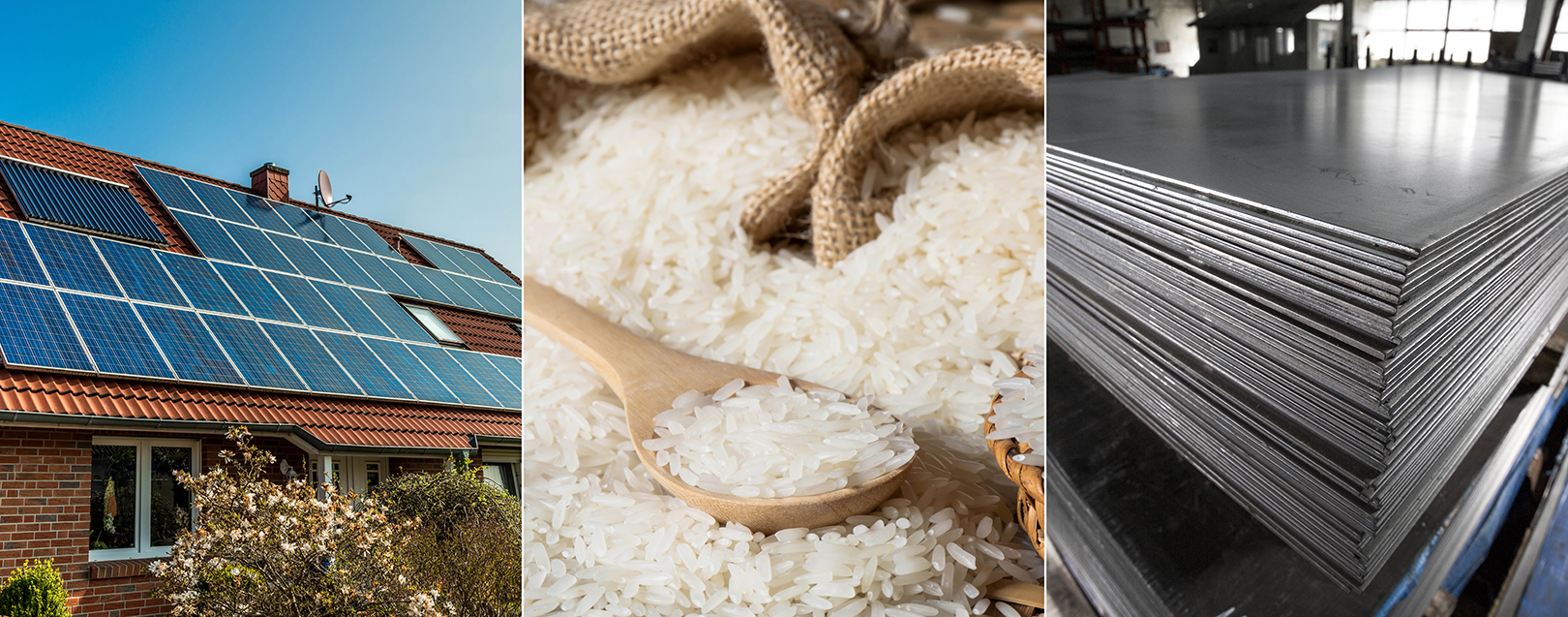
India’s forex reserves at an all-time high, enough to pay for one year imports!
By Abin Daya
Can we have a problem of plenty as far as Foreign Exchange Reserves are concerned? I’m not sure. What I know is that we do have plenty of reserves currently. We seem to be hitting new life-time highs/record levels every week.
Foreign exchange reserves as on May 05, 2017 were at $375.72bn, almost enough to pay for 12 months of India’s merchandise imports. Reserve levels have been rising continuously for the past 4 weeks, and have grown by $2.99 bn for the week ending 05 May. This is the biggest weekly rise in the past 34 weeks, and also contributes to a cumulative increase of $6.7 bn over the past 4 weeks.
RBI has been intervening in the market to ensure that the rupee does not appreciate too strongly, and thereby support the exporters. While we may think of defending a depreciating rupee as a challenging task, intervening when the rupee is appreciating has its own set of challenges.
As RBI buys US$, it also pumps in equivalent INR into the economy, which creates inflationary pressures due to the excess liquidity it brings in. The current macro-economic situation of low inflation is supportive of RBI’s intervention but any reversal will require steps to mop-up liquidity from the system.
Coming to the topics for this week, the government released the new series for WPI and IIP. While the WPI inflation under the new series has remained below that of the old series, it is on a downward trend due to the drop in food inflation. This is the case with Consumer inflation as well, where low food prices, particularly pulses & products, are driving down overall inflation.
There is a crisis of sorts brewing for basmati rice exporters, due to the upcoming change in guidelines for fungicide use for exports to EU. While the government is working to figure out a solution, things are looking difficult. This will be a topic we will track in the future too.
The steel industry has got an additional shot in the arm with anti-dumping duty introduced on 47 products in the last week. While recent price movements had made the anti-dumping duty redundant, prices have again fallen below the base price levels.
While steel prices are rising, power prices are falling. Solar power tariffs seem to be finding new lows every week. With surplus power and tepid demand growth, other producers are not in a good place, either. PPAs are getting shorter as buyers do not want to commit for longer tenors.
Retail and Wholesale inflation fall in Apr 2017
- Inflation, both retail and wholesale, fell in Apr, compared to their levels in the previous month as well as during the year ago period
Retail inflation

- Consumer or Retail Inflation dropped drastically across the board, while compared between Apr 2016 and Apr 2017
- While Food inflation has dropped from 6.4% to 0.6%, overall consumer inflation has fallen from 5.5% to 3%
- The steep fall in Food Price Inflation has been contributed by the fall in pulses inflation, which has dropped from 34.2% in Apr 2016 to -15.94% currently
- The index for Pulses & Products has fallen from 167.5 to 140.8 in the past 12 months
- While not as drastic as pulses, inflation on Vegetables has also fallen from 5% in 2016 to -8.59 in April this year
- Inflation on Food & Beverages has fallen from 6.3% to 1.21% assisted by the fall in Spices inflation from 9.8% to 1.71%, in addition to the above
- However, inflation in Fuel & Light has increased from 3% to 6.13%, but the low weightage of this group (6.84%) in the overall index has resulted in a very minor impact of this increase

- Even on a month-on-month level, CPI inflation has fallen between March and April this year
- Food inflation has dropped from 1.95% to 0.61% between March and April
- The biggest contributor to this is the moderation of sugar inflation from 17.05% in Mar to 11.4% in Apr
- Apart from this, inflation in pulses & products weakened even further from -12.4% to -15.9%
- Inflation in fruits fell from 9.4% in March to 3.8% in Apr, which was again another contributor to the fall in food inflation and consequently, to overall inflation
Wholesale inflation
- WPI inflation, which is the measure of average change in wholesale prices, underwent a revision in base year from this month onwards from 2004-05 to 2011-12
- First published from the week commencing Jan 10, 1942 (with base year of 1939), this is the seventh revision in base year the index is undergoing
- The other economic indicators such as GDP and CPI are already calculated with the base year of 2011-12, and this revision brings the WPI on par with the others
- Along with the base-year revision the series has also undergone a change in the formula for calculation of WPI, with excise duty no longer being a component for calculation of index
- The new series has 697 items spread across 22 product groups, as against 676 items across 12 groups in the previous series
- 199 new products were added in the new series, while 146 items were dropped by considering their relative importance in the commodity basket
- Also, a new Food Index with a weightage of 24.38% is being calculated to estimate the WPI inflation in food items

- Inflation as per the new series is lower than that in the previous series, due to a number of reasons, including shifting to a recent base year, and inclusion of new items/exclusion of old items
- Similarly, there have been a number of changes in the calculation of the Fuel & Power inflation, which has led to an overall decline in the inflation rates

- Pet Coke has been added as a new product in the new series, while Light Diesel Oil has been deleted
- As per the new series, WPI inflation has declined from 5.29% in Mar 2017 to 3.85% in Apr; in comparison, Wholesale inflation was -1.09% a year back in Apr 2016
- The decline has happened primarily due to drop in Fuel inflation from 23.7% to 18.5% and decline in inflation as per the new Food Index, from 5.5% to 2.9%
- Inflation in High Speed Diesel (HSD) has declined drastically from 54.64% to 38.92%, while that of Petrol has dropped from 43.38% to 25.64%
- HSD and Petrol make up the biggest chunk of weightage in the Mineral Oil group with 4.70 out of 7.95
- With further drop in Crude prices, this trend might continue and we might see further decline to the WPI inflation
- Inflation in primary articles with a weightage of 22.617 has dropped from 4% to 1.82%
Fungicide dilemma for Basmati exporters
- Exporters of Basmati rice are caught between a rock and a hard place, due to the upcoming changes in tolerance level being proposed by the European Union for tricyclazole, the fungicide currently used to prevent blast
- The current tolerance level for the chemical is 1 ppm, which is being changed to 0.001ppm from next year onwards, which is difficult to comply with, thus effectively shutting out the market for the exporters
- The government is working with the exporters to identify alternatives, but so far the efforts haven’t met with significant success
- While the fungicide isoprothiolane (IPT) could be considered as an alternative, as it is allowed in the EU, the said chemical is banned in the US
- This would mean that India would be putting one market at risk for the sake of the other irrespective of whether it remains with Tricyclazole or switches to Isoprothiolane
- While India is resorting to diplomatic measures to resolve the impasse, the chances of success are very limited
Anti-dumping duty on 47 steel products
- Most of the large international manufacturers find place in the latest anti-dumping order issued by the Ministry of Finance on Friday, May 12, 2017
- Hyundai, POSCO, Toyota Tsusho Corporation, Nippon Steel, Sumitomo etc. are some of the steel manufacturers named in the order as companies resorting to dumping of their steel products in India
- The new duty has been imposed on 47 products, and ranges from $478 per tonne to $561 per tonne
- The increase in prices have made anti-dumping duty more or less redundant as global prices for a number of products are now above the base price that triggers anti-dumping duty
- For HR Coil, where the base price was fixed at $489 per tonne, prices has risen to $500 per tonne last month on account of sharp increase in coking coal prices
- While prices have fallen back to $470-480 per tonne, they remain close to the base price level
- In the event the imported steel price is above the base price, importers only need to pay the 12.5% import duty
Solar tariffs fall; so do average durations of PPAs
- Solar tariffs seem to be in a free-fall, with new lows being discovered at every tender
- After the Rs.3.15 per unit recorded in a 250MW solar park at Kadapa, last week saw levels of Rs.2.62 per unit for a 250MW project in Bhadla park in Rajasthan
- Tariffs have been coming down steadily over the past 6-7 years, but the fall has been quite steep recently
- Huge capacity built up in China has led to a steep drop in prices of modules, and this is driving the tariffs lower for new projects
- At the same time, Discoms are unable to purchase additional power for supply to states, and this combined with the fall in tariffs is leading to shorter PPAs
- Buyers are wary of long-term PPAs of 10-15 years, as it is no longer easy to predict the situation over even the next 5 years
- Merchant power plants set up during 2009-14 period anticipating high projected demand are facing significant challenges as they try to offload power
- A part of this also finds its way to the Power exchanges, where supply has consistently remained above demand, thus driving prices down
- Demand growth has not been in line with expectations; with growth in consumption demand remaining lacklustre, manufacturers have scaled back capacity utilisation, which has, in turn affected demand for power.
- Some of the gas based plants, whose PPAs have expired, have seen them getting renewed on a case-to-case basis – some for a year and few others even on a monthly basis
- Completed projects without PPAs are facing significant challenges due to these issues

Abin Daya the author of 'Basics of Trade: An India Perspective' is a FEMA expert, a career transaction banker, with close to 15 years of experience in corporate and transaction banking, in India.
.jpg)





